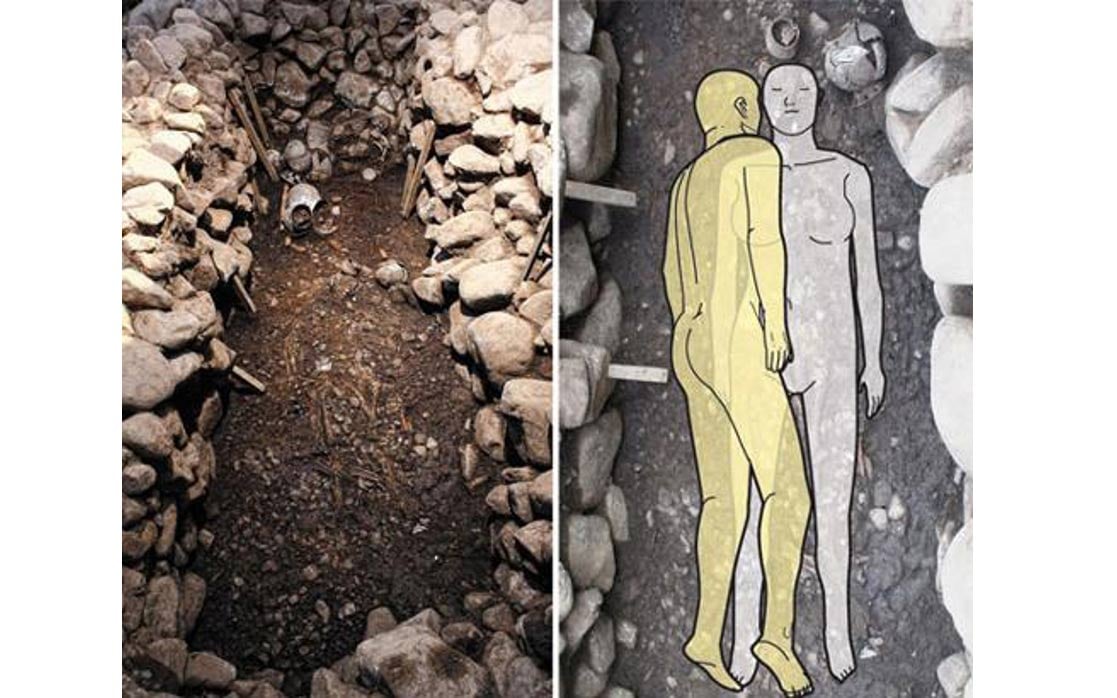Discovery of Ancient Tomb Suggests Man was Sacrificed to join a Noblewoman in Death
Archaeologists in South Korea have uncovered a 1,500-year-old tomb of a noblewoman containing the ancient remains of a woman and a man. The discovery of precious grave goods and the circumstances of the burial suggest that the man was sacrificed to join the noblewoman in death, possibly to act as her guard in the afterlife.
The Korea JoongAng Daily reports that the tomb was discovered near the coastal city of Gyeongju, which was once the capital of the ancient kingdom of Silla (57 BC to 935 AD). Consisting of over 1,000 years of rule, the Silla Empire was one of the world’s longest sustained dynasties. A great number of Silla tombs, which took the form of a stone chamber surrounded by a soil mound, can still be found in the center of Gyeongju, now a UNESCO World Heritage listed site.

Example of a Silla tomb – the Royal tomb of King Heongang located in Gyeongju, North Gyeongsang, South Korea (Wikimedia Commons)
Dating back to between the 5 th and 6 th centuries, the main chamber of the tomb contained the remains of a man and woman in their 20s or 30s. The woman was wearing a belt decorated with golden decorations, a finely decorated gold earring, and was buried with jade green jewels and a threaded necklace made of beads. The man was buried without adornments and lay in a parallel position, his head adjacent to hers.

The woman was found to be wearing this golden earring. Credit: Cultural Heritage Administration
In a separate room within the tomb, archaeologists found a sword, pottery, and the harness of a horse. The Cultural Heritage Administration in South Korea suggests that the grave goods suggest the female was a noblewoman who rode horses and used weapons, and that the burial was intended for her.
“During Silla, which even had a queen ruling the state at one point in its history, women were relatively empowered,” reports Korea’s JoonAng Daily. “The entombed man had no accessories related to him, in contrast to the woman, another possible indicator that he was a human sacrifice.”
MORE
- The Ancient Complex of Koguryo Tombs in North Korea
- The heart-breaking love letter found in a mummy’s tomb in South Korea
- Archaeologists make grisly discovery of 80 skulls of sacrifice victims in China's largest Neolithic city
The Cultural Heritage Administration has said that burying the dead with a human sacrifice was not uncommon in the Silla dynasty.
“This is not the first case where a male sacrifice is buried in a female’s tomb,” Kim Kwon-il, the foundation’s researcher, told the Korea JoongAng Daily. “However, male sacrifices were often buried in the room where the artifacts were, as guards, so to speak, for the dead.”
The newly-discovered tomb represents the first time an apparent male sacrifice has been found in the same chamber as the female.
“The man could have been a servant, body guard or lover,” Lee Han-sang, professor at Daejeon University, an expert in Silla history, told South Korea’s daily The Chosun Ilbo. “The discovery is important because it shows an unknown type of burial of the living with the dead in the Silla period,” he added.
Image: The Silla dynasty tomb with bones and artifacts. Credit (Left): Cultural Heritage Administration, South Korea. Credit (Right): The Chosun Ilbo.

















